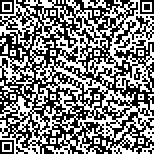下载中心
优秀审稿专家
优秀论文
相关链接
摘要

同时具有高空间分辨率和高光谱保真度的全色/多光谱融合影像具有广泛的应用前景。然而,一方面全色/多光谱融合方法通常会产生不同的空间畸变或光谱失真;另一方面,受卫星成像系统限制,无法获取真实高空间分辨率多光谱参考影像,因此,如何在无真实参考影像情况下有效评估融合影像质量具有重要意义。为此,本文提出了一种基于多元高斯模型(MVG)的全色/多光谱融合影像无参考质量评价方法,本方法基于全色/多光谱遥感影像融合大型数据库,构建了包含多种卫星类型和专题地物的基准数据集、测试数据集、验证数据集,用于MVG模型设计、测试、验证;在此基础上,充分考虑融合影像的空间畸变和光谱失真,针对性提取影像的空间和光谱敏感特征,通过大量空、谱特征的MVG模型训练拟合,建立基准MVG评价模型,此外,在基准MVG训练中,选择高方差子影像进行模型训练,以增强模型的稳健性;最终,以基准MVG模型与融合影像MVG模型之间的相对距离计算融合影像质量。实验结果表明,本研究方法相较于传统无参考质量评价方法具有一定优越性,有利于全色/多光谱融合影像质量评价的应用研究。
Pansharpening aims to sharpen a Low-spatial-Resolution (LR) multispectral (MS) image using a High-spatial-Resolution (HR) panchromatic (PAN) image to obtain a HR MS image. The pansharpened image with high spatial resolution and spectral fidelity had a wide application prospect. However, on the one hand, pansharpening methods usually produce different spatial or spectral distortions; on the other hand, the real HR MS reference image for the quality evaluation of the fused image cannot be obtained due to the limitation of satellite imaging systems. Therefore, the effective evaluation the quality of the fusion image without the real reference image is of great significance.In this paper, we propose a new non-reference quality evaluation method for pansharpened image on the basis of the Multivariate Gaussian Model (MVG). On the basis of a large-scale pansharpening database, this study constructed benchmark, test, and verification data sets, including various satellite sensors and thematic types. Then, a novel benchmark MVG evaluation model was constructed on the basis of the benchmark data set. In the proposed method, the images were first divided into sub-image blocks, and the spatial and spectral sensitive features of each sub-image block were first extracted. Then, many spatial and spectral characteristics were trained to establish the benchmark MVG evaluation model. In addition, in the benchmark MVG training, the sub-image with a high variance was selected for model training to enhance the robustness of the benchmark MVG model. Then, the testing MVG evaluation model for the fused image was established by comprehensively considering the spatial and spectral distortions. Finally, the relative distance between the benchmark and testing MVG models of the fused image was used to calculate the fused image quality.Experimental results show that the proposed method has better performance than the traditional non-reference quality evaluation methods in most satellite- and thematic-based data sets. The proposed method is based on Wald’s protocol and cannot be extended well to the full resolution evaluation of the fused image. Therefore, in future work, we will continue to study the full resolution evaluation method for pansharpening, which is more challenging and meaningful.

